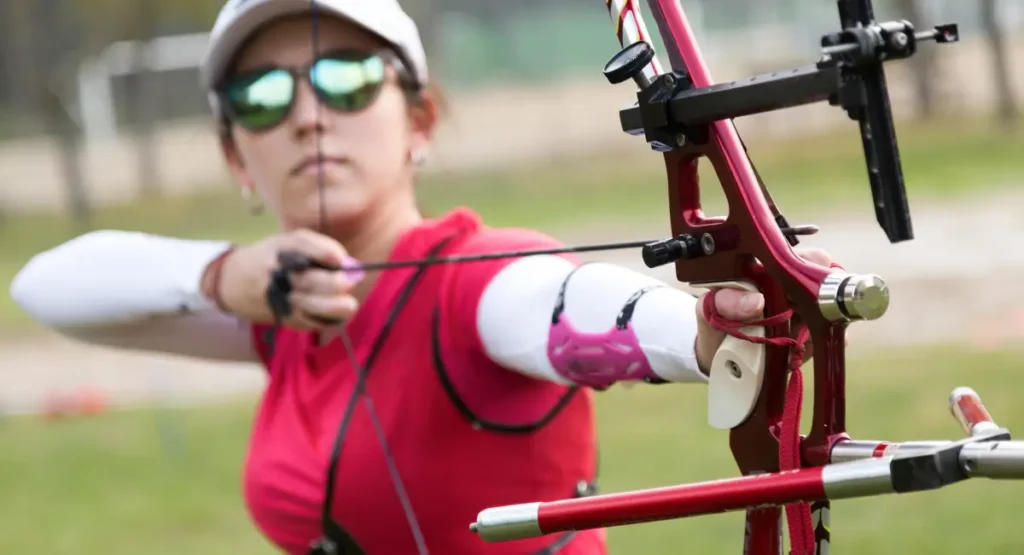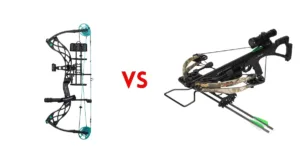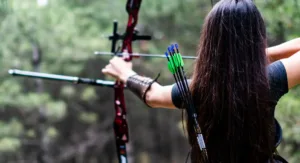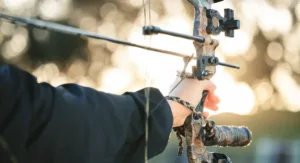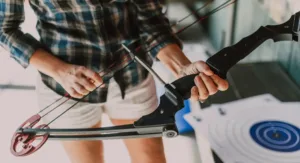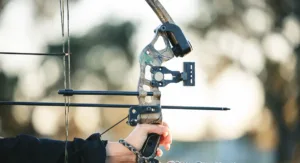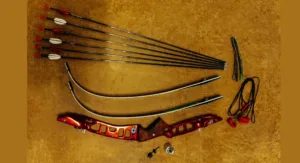The world of Olympic archery is a fascinating blend of precision, skill, and technology. For archery enthusiasts, the choice of a bow can make all the difference. Whether you’re an aspiring Olympic archer or just someone who appreciates the sport, understanding the importance of selecting the right Olympic archery bow is crucial.
This guide will take you through the essentials of choosing and maintaining your bow, exploring everything from its rich history to modern technological advancements.
A Brief History Of Archery In The Olympics
Archery has a long and storied history, with its roots tracing back to ancient civilizations where it was used for hunting and warfare. It appeared at the Olympic Games in 1900 but was soon removed due to lack of standardized rules. It wasn’t until 1972 that archery rejoined the Olympic family. This was thanks to organizations like the World Archery Federation, which helped establish uniform competition regulations.
Since its reinstatement, Olympic archery has evolved significantly. The sport now features standardized equipment, including the Olympic recurve bow, as the sole bow type used in competitions. Olympic Games bring innovations in technology and technique, creating an exciting and evolving discipline for athletes and fans alike.
Read More : Hit The Target With This Ultimate Guide To Archery For Beginners
Types Of Bows Used In Olympic Archery
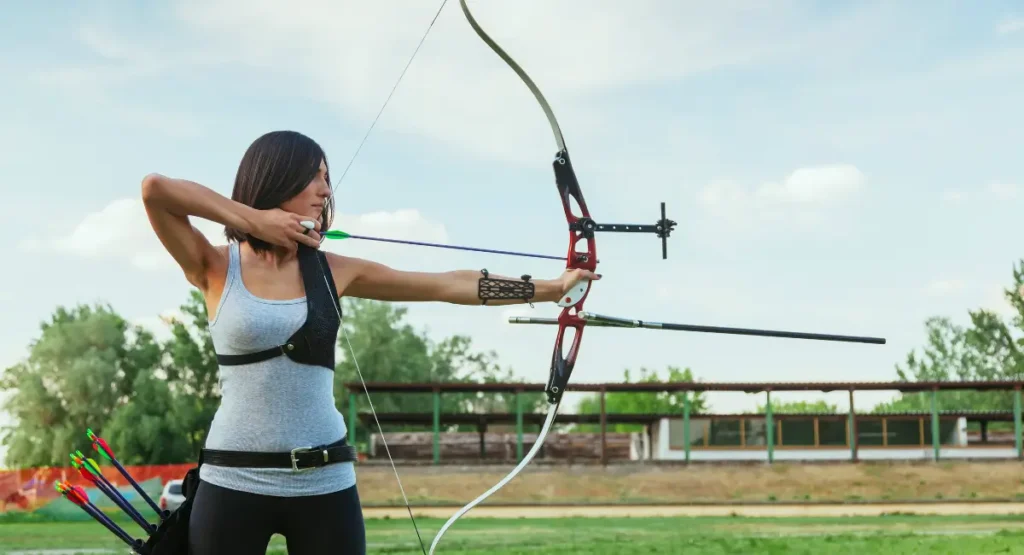
Olympic archery is centered on the recurve bow. Unlike compound bows or traditional longbows, recurve bows are specifically designed for precision and consistency. They feature limbs that curve away from the archer when unstrung, giving them more power and accuracy. The materials used in these bows are cutting-edge, with risers often made from high-quality aluminum, and limbs crafted from carbon-fiberglass composites for optimal performance.
The exclusive use of recurve bows in Olympic competitions ensures a level playing field and allows archers to showcase their skills. The recurve bow’s unique design and materials contribute to its status as the preferred choice for Olympic archers worldwide.
Read More : Traditional Archery For Beginners – Getting Started
Key Components Of An Olympic Archery Bow
Understanding the anatomy of an Olympic archery bow is crucial for enthusiasts looking to enhance their shooting skills. Each component plays a vital role in precision and performance. Here are the key parts of an Olympic archery bow:
- Riser: The bow’s backbone, typically made from lightweight materials like aluminium or carbon, provides stability and balance.
- Limbs: Attached to the riser, these are made from carbon-fibre composites that store energy while offering flexibility and strength.
- Bowstring: Usually crafted from durable synthetic materials, it connects the limbs and transmits energy to the arrow.
- Sight: An essential accessory that helps archers aim precisely.
- Stabilizer: Reduces vibrations and improves balance for better shooting control.
- Arrow Rest: Supports the arrow, ensuring a consistent release for improved accuracy.
By understanding these components, archers can optimize their equipment for enhanced performance.
Read More : Top 5 Archery Exercises To Enhance Your Performance
Accessories And Customizations
To enhance your archery experience, the right accessories and customizations are essential. Here are some key accessories to consider.
- Stabilizers: Available in various lengths and weights, these minimize vibrations and increase stability.
- Vibration Dampeners: Further enhance stability, providing a smoother shot.
- International Limb Fitting (ILF) System: A game-changer that allows archers to mix and match components for optimal performance.
- Adjustable Draw Weights: Customise your bow to fit your unique preferences and shooting style.
- Variety of Sights: Experiment with different sights to improve accuracy and performance.
With these accessories, you can tailor your setup to suit your individual needs and elevate your archery skills.
Read More : Mastering Traditional Archery Tips Techniques And Insights
Choosing The Right Bow
Choosing the right Olympic archery bow involves careful consideration of several key factors to ensure optimal performance. Here are the main aspects to remember:
- Draw Weight: Match the draw weight to your strength and skill level. A heavier draw weight offers more power but can cause fatigue if you’re not ready for it.
- Total Bow Length: Longer bows provide more stability, while shorter bows allow better maneuverability.
- Personal Preferences: Test various setups and find what feels comfortable.
- Bow Weight and Handling: Starting competitors should prioritize a well-balanced bow, as it enhances accuracy and overall performance, making it a valuable investment in your archery journey.
Read More : Transform Your Journey: Discover the Best Recurve Bow for Beginners in 2024
Maintenance And Care
To ensure your Olympic archery bow remains in top condition, regular maintenance is essential. Begin by inspecting all components for wear and tear, especially the bowstring, which should be replaced periodically.
Proper storage is crucial. Keep your bow in a cool, dry place, away from direct sunlight and moisture. Use a bow case for added protection during transport. Cleaning the riser and limbs with a soft cloth will preserve their finish and prevent damage.
Adjustments, such as tightening screws and tuning the bowstring, should be performed regularly. These small tasks will keep your bow functioning flawlessly and extend its lifespan.
Training And Techniques
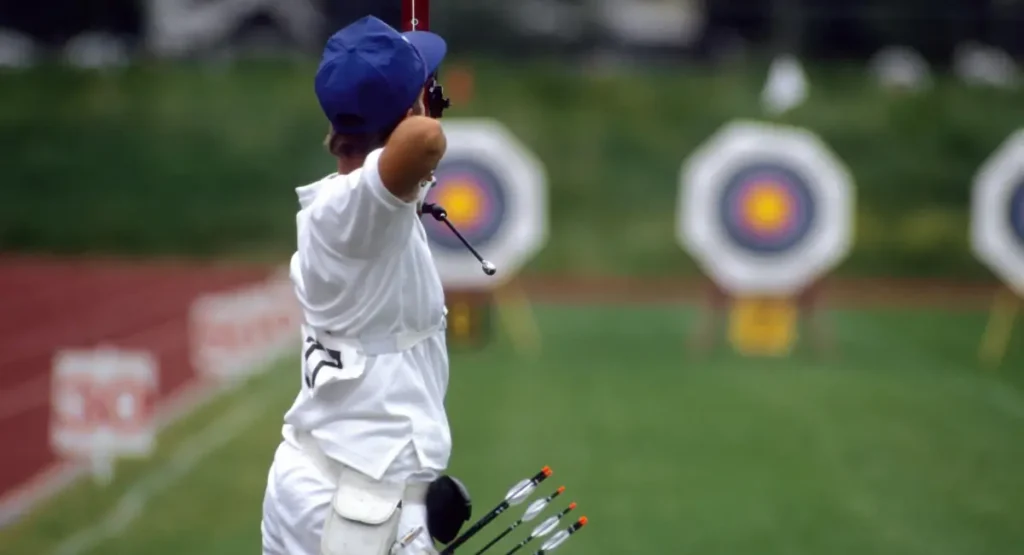
Mastering the Olympic archery bow requires dedication and practice. Begin with the fundamentals, focusing on your grip, stance, and draw technique. A consistent grip ensures a steady shot, while a proper stance provides balance and control.
Aiming involves aligning your dominant eye with the target and using the sight for precision. Practicing with a target of Olympic archery dimensions will simulate real competition conditions and improve your accuracy.
Experiment with different shooting techniques, such as the anchor point method, which involves drawing the bowstring to a consistent point on your face. This technique enhances consistency and accuracy, giving you an edge in competition.
Regulations And Competition
Understanding Olympic archery regulations is essential for aspiring athletes. The International Olympic Committee (IOC) sets strict equipment standards, ensuring fair competition. Bows must meet specific weight and dimension requirements, while arrows adhere to length and diameter guidelines.
Olympic archery scoring is based on accuracy, with points awarded for each arrow that lands within designated target zones. Familiarizing yourself with these rules will prepare you for competition and help you succeed on the international stage.
Conclusion
In conclusion, the Olympic archery bow is a marvel of engineering and craftsmanship. From its historical roots to modern advancements, this bow has become a symbol of precision and excellence. By understanding its components, selecting the right setup, and maintaining it properly, you can elevate your archery experience.
Whether you’re a seasoned competitor or a newcomer to the sport, the knowledge gained from this guide will serve you well. Explore further resources and engage with the archery community to continue your learning and growth.
Frequently Asked Questions (FAQs)
What Is An Olympic Archery Bow?
Olympic archery bows, also known as a recurve bow, are exclusively used in Olympic competitions. It features curved limbs for increased power and precision.
How Much Does An Olympic Archery Bow Cost?
The cost varies based on materials and accessories but generally ranges from $300 to $1,500.
What Are The Key Components Of An Olympic Archery Bow?
Key components include the riser, limbs, bowstring, sight, stabilizer, and arrow rest.
How Do I Choose The Right Olympic Archery Bow For Competition?
Consider factors like draw weight, total bow length, and personal preferences for components. Test different setups to find the most suitable fit.
Can I Customize An Olympic Archery Bow?
Yes, the International Limb Fitting (ILF) system allows customization, enabling you to mix and match components for optimal performance.
What Maintenance Is Required For An Olympic Archery Bow?
Regular inspections, cleaning, and adjustments are essential. Replace the bowstring as needed and store the bow in a protective case.
Recommended Articles
- The Ultimate Guide To Choosing Between Compound Bow vs Crossbow
- How To Carry A Bow – Tips & Techniques For Archers
- Ultimate Guide To Installing Compound Bow Arrow Rest
- The Ultimate Guide To The Best Archery Brands Of Compound Bows
- How To Utilize Recurve Bow Sights: A Comprehensive Guide
- The Archer’s Craft: Understanding Parts Of Recurve Bow

